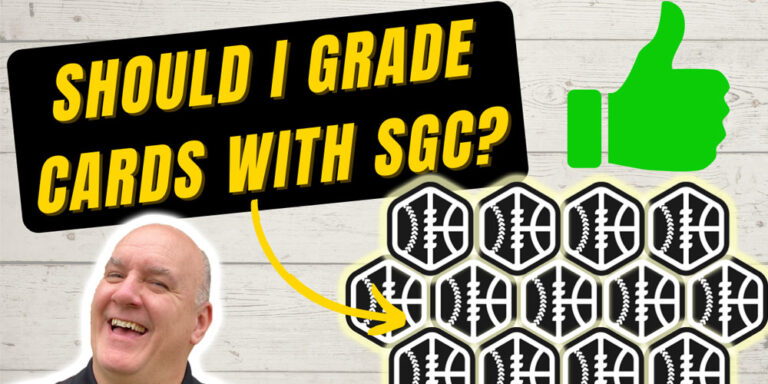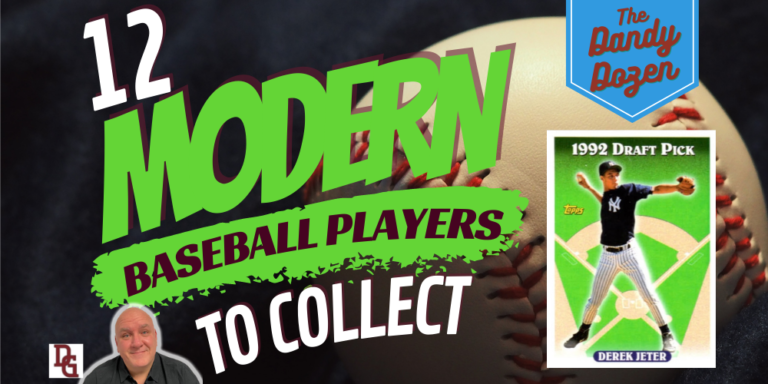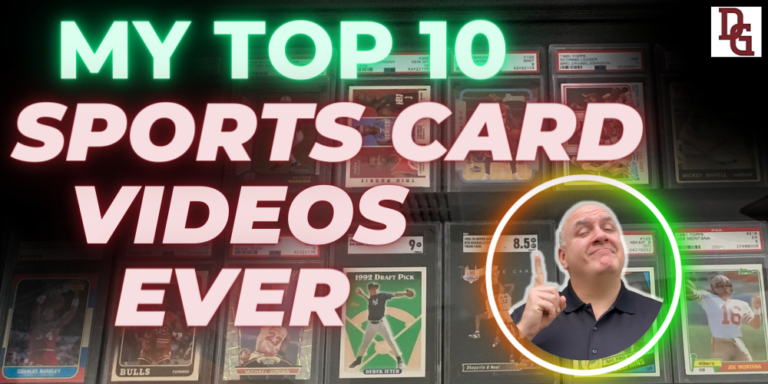It is officially draft season folks, and that means it is time for some draft strategy. I always enjoy digging in to player rankings, compiling spreadsheets, and discussing players ADP and hype on Twitter this time of year. I obviously am not alone, but maybe some of you need a little nudge or kick in …
Fantasy Football Draft Strategy: Prepping for the Prep (Part One)

It is officially draft season folks, and that means it is time for some draft strategy. I always enjoy digging in to player rankings, compiling spreadsheets, and discussing players ADP and hype on Twitter this time of year. I obviously am not alone, but maybe some of you need a little nudge or kick in the pants to get started. Obviously some of you may be fellow writers in the industry or established veterans in the game. That is fine and this may be aimed more at the casual gamer’s or novice’s to the game we love. However, there should be something for everyone in here.
Over the upcoming weeks I will help guide you through your preparation round by round and based on different draft positions you may have in your draft(s), while also trying to encompass all formats. Auction leagues are a completely different beast so I will not be covering that format. I will primarily focus on Redraft/Dynasty formats. I will also be supplying tiers for you to use as well.
So if you are new to this game, or even if you’re not, you may feel overwhelmed at first. You may be concerned about not knowing all of the players new and old, when to pick certain positions, or concerned you will not be able to hold back your adoration for your favorite local teams player and reach for him in the drafts. That’s where draft tools come in to play. Many will simply buy a Fantasy Guide (I recommend the Fake Pigskin draft guide if you do) of their choosing, highlighting a few players, and utilizing the top 300 (I would use none other than David Gonos’ rankings) enclosed. Can this work? Sure. However, you need to be aware there is more you can do, and having a draft strategy is critical to continued success.
So what do you need to do to prepare for prepping in your leagues? Let me help:
Prepping for the Prep
1. Know Your League(s) Rules and Scoring:
This is the most critical step of all in my opinion. Many Re-Draft leagues (YAHOO, ESPN) have a standard format by default (QB, RB,RB, WR, WR, Flex, TE, DEF, K) and standard scoring. It is YOUR job to know and understand your roster requirements, as well as the scoring. Scoring rules and understanding them are both very important and detrimental to both developing an overall strategy and ultimately any hopes for success in your league. Study the scoring and understand it. If you are new to the game ask questions, or make sure you are using the right rankings/guides for your prep.
If you are in a 2 QB league, IDP, or PPR league you need to make sure you are accounting for this in you draft prep. You don’t want to purchase, or have a top 300 that isn’t aimed at PPR, or fails to list Individual Defensive Players when in fact that plays a major role in your team makeup. The Fake Pigskin guide referenced above has every format covered.
An example of why this is important: I was in a league 4 years ago that I joined to fill at the last minute. I winged it with my rankings, and the sites default rankings. I did well, having the second best record, and made it to the championship. My receiving corp. was amazing (Andre Johnson, Percy Harvin, Vincent Jackson) but I got crushed by 55 points in the championship game to a team whose receivers were (Devin Hester, Josh Cribbs, and 1 starting RB was Leon Washington).
Do you see a theme with my opponents team? I would have buried him in a standard league or PPR league. However, this league rewarded Return Yards. BIG TIME! The other owner knew this (as he set up the league…. of course.) I didn’t look at the rules and scoring prior to draft, and ultimately it cost me the championship.
Would I have drafted differently in this case? Probably not, but I would have sought out more returners for my bench had I known that critical tid bit of information all along along.
Another common mistake is not knowing the value of quarterbacks. I will touch on this more thoroughly in my next piece on valuing quarterbacks on draft day. However, knowing the value of a passing touchdown is critical. If it’s 4 points a quarterback will still be the highest scoring player on your team, at least more than likely, but they are not as valuable as a positional player. If it’s 6 points however, your draft strategy needs to change slightly. Also consider bonus points if they are a part of your league.
Bottom line: Know your league rules, understand them and if possible make note of them on your draft day cheat sheet, spreadsheet, fantasy guide, or whatever you should use in the heat of draft battle. Sound overwhelming? Well, it kind of is, but if you put the work in, you will likely have an upper hand on other owners who may not do the same. Especially in start up leagues.
2. League Format:

Is it an Auction league? A Keeper League? A Dynasty League? A Standard re-draft league? Unless you are a complete rookie to Fantasy sports this is one of the first questions asked prior to joining “What kind of league is it?” Make sure you know the format and adjust your preparations accordingly.
In a Dynasty League the will to win now should still dominate your strategy, BUT you also need to consider the future. Drafting a seasoned veteran here or there is ok, but if you draft too many you may end up with a one year wonder, or worse…. The same goes the other way, if you draft too young you may never achieve the success you need to win. Find the happy medium. If you are passing on a QB like Peyton Manning for a younger quarterback like Colin Kaepernick, he better be solid, or the rest of your team needs make up for the likely deficit in the QB position, at least this season.
3. Make Your Own Cheat Sheet:
This one is pretty simple. Study your league rules/scoring and roster requirements, and make your own sheet to utilize during the draft. A top 300 alone just won’t cut it. It doesn’t account for when to draft a TE, or a backup QB for example. Live draft rooms are helpful as they typically show who was drafted, your roster, and allow you to build a que of targets.
However, what if you are at a friend’s place during a live draft and your wireless connection drops?? Having a typed up or hand written sheet can be a life saver. Technology can be amazing while making things smooth and easy for you in your prep/draft. However, it can also backfire. I’ve been in a few drafts where another owner showed up with their iPad only to have the battery die, or the draft room or even their rankings site not load properly. That quickly becomes their darkest hour as I end up watching them scramble to borrow another owners fantasy guide, or look over their shoulder to see the draft board. This is both humorous and painful to watch. So, as I said previously HAVE A BACKUP PLAN to your backup plan.
I typically make a spreadsheet, keep it simple, or as complex as you want. You can simply do players and rounds projected (Utilizing ADP), or bolster it with last year’s stats, projections, points, etc. There are sites now that can make these for you quickly and easily. Fantasypros.com has one of the best and easiest tools to use. They also compile rankings from hundreds of the industry best, so you know your ranking needs are covered.
If you’re in a Dynasty league consider adding the players age. Auction leagues add dollar value, or perhaps an estimated balance ledger.
Use as many tools as you want, but your cheat sheet is your best weapon! Make it your own.
[table id=65 /]
The Player A,B, and C should be obvious. It’s your top 3 choices. I typically get these based on ADP and rankings. So, if you have the 4th pick in rd 1, and pick 21 in rd (like above) you will want to focus on targeting guys in the ADP of 17-24 range. Be realistic. Listing players who are going at pick 14/15 on average shouldn’t be on your sheet for pick 21. Doesn’t mean if they are there you don’t take them, just save time and be realistic. Don’t be that owner who shouts “NO! That was my pick and then take an extra 10 minutes or more to scramble and search for another guy.
4. Using rankings and ADP

I typically utilize multiple sets of rankings, and combine with ADP on some of the fantasy sites. Most sites now have ranking compilations, from multiple contributors. This can help gauge an average ranking on certain players. There is also the aforementioned fantasypros.com which compiles consensus rankings, ADP, and helps you create cheat sheets from hundreds of the top industry experts.
Utilizing ADP can help tie it all together by looking at a ranking and then Average Draft Position of said player. Let’s just say you see Demaryius Thomas ranked 8th Overall and third amongst all receivers. Can you plan on him being available in the second round? Perhaps, but with his ADP at 10 , and you really want him, plan accordingly.
I encourage multiple sets of rankings to use, consolidate if it makes it easier, (this takes time of course, but can be well worth it)
There are also sites that can create rankings/customize for you based on your league parameters. They are rarely free, but can assist in doing all of the grunt work for you.
5. Utilize Tiers!
If you know me well, or have gotten in a fantasy argument with me before you will know I am a HUGE tier guy. I love them, I don’t live strictly by them, but for the most part I use them in every sport and every draft.
I plan on creating tiers for each position this season that you can use for your own draft planning over the next few weeks. Or, of course you can likely find some on the Interwebs and simply print them out, etc.
Why do tiers work? It can help by breaking down positions, by player potential and ceiling. So if you are torn between a RB or WR, and there is a Tier 2 receiver available, or a tier 3 Running Back, you can make your decision significantly easier. Of course your existing roster, other owners, and draft picks all need to be accounted for. So if you don’t have a running back, or only one and need another, due to depth you may need to opt for the tier 3 guy.
It’s always up to you, but remember tiers can shrink a position into chunks that if used effectively will help you dominate your draft.
6. Know Your Fellow League Mates If Possible
If you are joining a new league with new people this is harder to do. If you are a returning member though, you likely already have a feel for your league and its owners. You know there is the guy who LOVES quarterbacks, or the guy who will load up on the two best Tight Ends early, or the guy who loves his rookies.
Knowing these owners and their draft day, and fantasy season tendencies, can give you an edge. If you know a guy may reach for his favorite player in a certain round, or snag another tight end you can plan around that.
In auction drafts you may need to spend more on a key player you need if you know another owner will likely target them. If you play like to play with fire, why not raise the bid price. If a guy is hell-bent on landing Rodgers, make him pay absolute top dollar. Just don’t poison yourself!
During the season you can also gauge how much FAAB to bid, or when to put in claims on backups, rookies seeing more playing time etc etc. None of this is critical, but it can all help you throughout your fantasy draft and season.
7. Don’t draft defensively

In my entire fantasy career there have always been instances, especially in football, where an owner will try to get smart and draft defensively. Thinking “ Ha ha. He drafted Steven Jackson. I am going to draft Devonta Freeman early to block him from getting his handcuff.” The thought process is of course that the Jackson owner will be desperate for his handcuff, the owner sniping him will rattle the Jackson owner so much they’ll draft terribly, or come groveling to him mid-season “Please, please! Trade me Freeman! I’ll give you Cordarelle Patterson for him!”
Other owners draft multiple top 15 Quarterbacks. I am not sure why, perhaps for safety reasons, or in the hopes a team will be stuck with a lousy quarterback, and will have again, no choice but to grovel for a trade.
The idea isn’t terrible, the problem is. It rarely (if ever) works out. The NFL is too deep. There are plenty of solid players and though it can be annoying for a Top 10 running back owner not to have his handcuff in case of his injury, it most likely won’t break their back. What if instead of that defensive move you had drafted a Terrance West/Carlos Hyde type player instead. The options are endless, my point here is that one cannot become too one sided when it comes to draft technique.
If you take anything from this portion of the piece I’d like it to be this… Quarterback is the deepest position in terms of your draft. If you draft a quarterback simply for trade bait……YOU. WILL. FAIL.
8. Finally, Keep an Eye on Positional Battles and Injuries
Knowing who is next in line, or competing for a starting spot can be a huge weapon on draft day. That poor hapless owner with his top 300 ranking list from a fantasy guide printed in May, could very well be oblivious that his next target, listed as a starter, is hurt, won’t get goal-line touches, or will be sharing play-time with a rookie.
Keeping tabs on this is time consuming, but can be made a bit easier utilizing web sites such as FantasyAlarm.com, PROPLAYERSTATUS.COM, Twitter, or even your league’s home page.
Stay plugged in, there are more and more tools, sites, and avenues to get the latest fantasy news every day. Take advantage of them, and know that many owners simply won’t due to time, ego, or indifference. It will give you an advantage each and every week.
Nothing is guaranteed to the owners who put in the most time of course, especially in Fantasy Football. However, the more effort you put in, eventually it will pay off, and no one will be able to say you didn’t “earn” your championship!
I will return soon with Draft Strategy Rounds One Through Four, and Positional tiers to help you along the way. Of course feel free to ask questions, or comments in the comments section, or shoot me questions @fantsychillpony on Twitter. Thanks for reading, and good luck!








